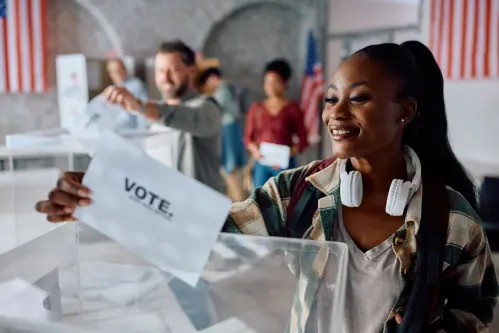Senator Lamar Alexander hailed ESSA as a means to return power to the states, but neither Hillary Clinton nor Donald Trump seems quite convinced that the states should be left on their own. Although neither candidate has a worked out approach to education—unlike any of the last three presidents—ESSA may be in for tough going should either win office this November. Although ESSA does include some tighter regulations on special education students (which CCSSO president Tony Evers called “even more onerous” than NCLB’s), the basic premise of the law is that states will have greater freedom to set their own curriculum, identify low-performing schools, and craft appropriate remedies to improve them. But neither Clinton nor Trump appears content to “do nothing.”
In line with other Democrats, Clinton can’t afford to let go of the “legacy of this civil rights law,” a legacy that has always included federal intervention. Civil rights groups are some of her most important political supporters and the groups believe they benefit from federal rules requiring universal testing and accountability. Not coincidentally, Clinton also seemingly proposed a federal SWAT team for low-performing schools in the Democratic debate in Detroit this spring. She also acknowledged differences in school quality when she announced her candidacy for president—a concern that is most apparent in low-income, non-majority-white school districts. But Clinton also has drawn deep support from teachers’ unions in 2008 and 2016. Although the unions were less than enamored with Arne Duncan’s and Barack Obama’s federal vision of education, they are not averse to lobbying the federal government on merit pay, collective bargaining, and teacher evaluation based on student performance. A Clinton Department of Education won’t alienate these supporters by allowing states to stray too far from the status quo or ESEA’s historic equity focus.
For the states, Trump may not be much different. His modus operandi suggests that should he want states to change part of their education plans he would simply demand it. Still, Trump has hinted that he sees his federal role as more of a big-picture director rather than as an accountant. For example, ESSA explicitly allows states to choose their own “challenging” standards, and 46 states use all or part of the Common Core (variously branded). The states made that decision, yet Trump has loudly denounced the Common Core and said, “It’s gone.” But he doesn’t suggest what they should adopt. He has also repeatedly expressed support for robust school choice, and this might suggest that he’d require some specific form of school choice to be an option in low-performing districts (or even a voucher program) through ESSA. On the other hand, Trump’s anti-establishment persona might squelch the Department of Education’s regulatory regime. ESSA assumes that a Department of Education exists (and assigns roles to it), but Trump has baldly said he’d eliminate the department. Presidents cannot dissolve departments, and they must spend money that Congress has appropriated—that would seem to include Title I funds. But there is no requirement that a President Trump would appoint anyone to the department (leaving it with little political oversight), or he could appoint a like-minded foe to eviscerate its operations. Such actions are effective for squelching federal programs, and they would — ironically—ensure that the states had a free hand in their education programs, like Lamar Alexander has demanded from Education Secretary John King.
ESSA’s promise of federalism may have been a false dawn. It’s not likely that either Clinton or Trump will be content to let the states design and implement their own accountability systems or school turnarounds. Clinton’s history suggests as much, and Trump doesn’t make a clear distinction between federal and state authority. State education leaders shouldn’t get their hopes up. ESSA may be a new, smaller model, but both these candidates seem sure to keep the federal government in the driver’s seat.






Commentary
ESSA could face an uphill battle whether Clinton or Trump wins
June 10, 2016